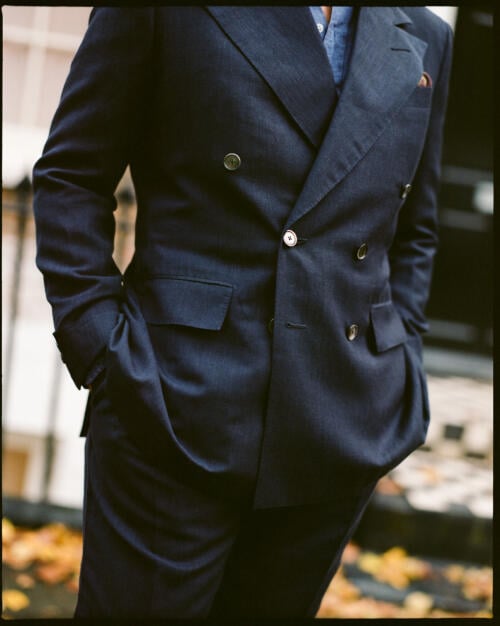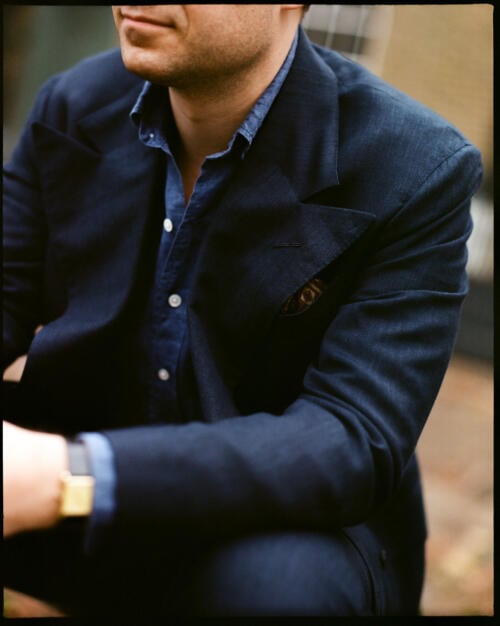
By Aleks Cvetkovic.
For much of my career I’ve felt like an anomaly, especially at the likes of Pitti or industry events. Principally this is because I’ve always chosen to wear structured tailoring, largely from London tailors, over the unstructured, Italian style that’s dominated menswear for the last 10 or 15 years.
Italianate tailoring is lighter, comfier and more casual than its British or French equivalents, or so the prevailing wisdom tells us. While unstructured tailoring is undoubtedly light and comfortable – and to be clear, I’m absolutely not disputing this – I’ve never bought into the notion that it’s the only solution for men who want to wear tailoring that feels natural on the body.
Perhaps it’s my innate pro-London bias, but I’ve always preferred to wear jackets with structured shoulders and firm, canvased chests. When I first got into tailoring, it was ‘olde worlde’ Hollywood glamour that drew me in, suits with ‘shape and drape’; it irks me that much of the menswear world discounts shapely, drape-cut tailoring as impractical and uncomfortable.
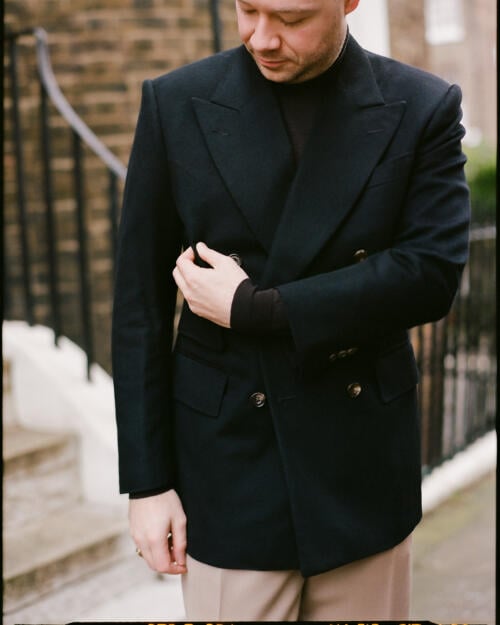
In order to illustrate my point, Simon has asked me to photograph a couple of outfits that demonstrate the principles of shape and drape, and why they work for me.
First up is one of my all-time favourite pieces, a jet black wool-and-cashmere double-breasted blazer from Edward Sexton, cut with a little extra volume in the chest compared to a conventional Sexton garment.
This jacket was cut for me by Sexton’s Cutter, Nina Penlington, and is her evolution of a pattern that Edward drafted a few years ago.
Back then, Edward used to create garments for me that he called ‘semi-drape’ in style, inspired by the prevailing cut he learned to draft in the ‘60s under the legendary Fred Stanbury at what was then called Kilgour, French & Stanbury. I don’t really remember how we came to the decision that the look was right for me, but somehow it clicked.
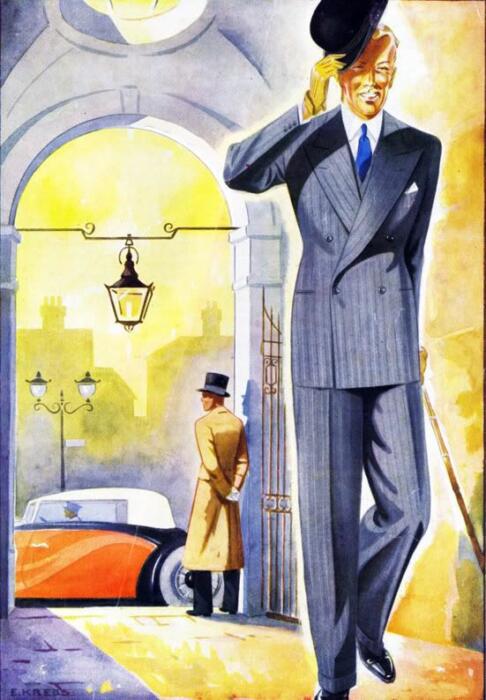
In this semi-drape style, the tailor creates a generous, roomy jacket that emphasises the shoulder, chest and hip without putting much suppression into the waist. It’s purposely cut with room to move, not close to the body.
It’s the style that prevails in a lot of 1930s fashion plates (above) – those illustrations we all love of square-jawed men with squarer shoulders, Herculean chests and only a little pinch through the waist.
It was also a style that Cary Grant gravitated towards in the early 40s. See how the jacket below combines built-up shoulders and broad lapels with a great big chest running into the sleeves?
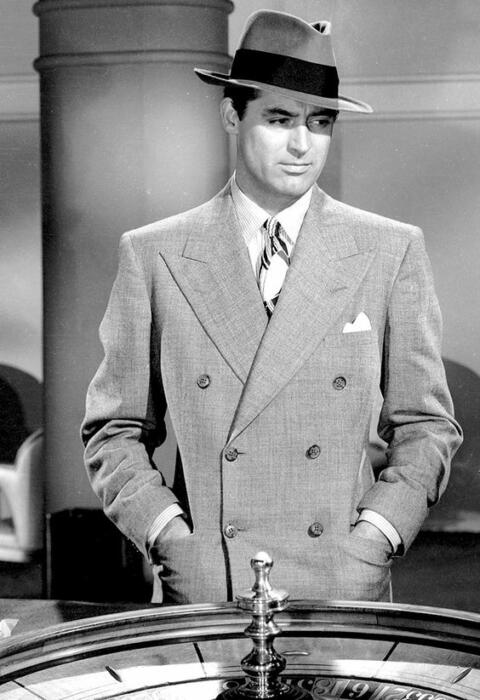
Essentially, the garment is big and therefore comfortable, but also sharp because of its silhouette, which is more architectural than full-on drape coats from the likes of Anderson & Sheppard.
It’s tricky to capture the blazer’s subtleties thanks to its plain cloth, but the chest is by some way the roomiest I own, designed to complement an elongated, softly padded and roped shoulder line.
The lapels are generous, but not over the top, and the pocket flaps are a good 2.5 inches deep. Nina did a superb job balancing the blazer’s proportions, all round.
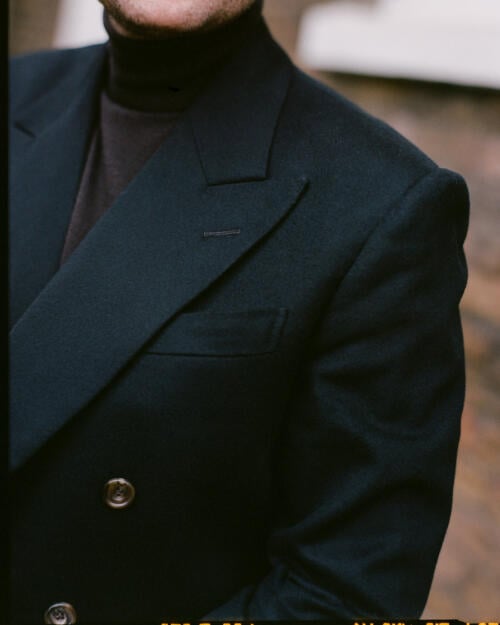
The large chest and shoulder add gravitas to the coat, which I like, but it doesn’t feel stiff. It’s big but not rigid. On the body it feels easy-going, almost slouchy.
It’s a different kind of softness to a Neapolitan or Florentine garment, and I think rather more glamorous. At the same time, it feels loucher and less ‘proper’ than garments from tailors like Huntsman or Chittleborough & Morgan.
A roomy coat like this also suits a full-cut trouser, but doesn’t feel like a period piece. These cavalry twill trousers are Saman Amel’s ‘Amo’ style, which has a contemporary rise and well-placed single reverse pleats – they’re a forward-looking style, not at all nostalgic.

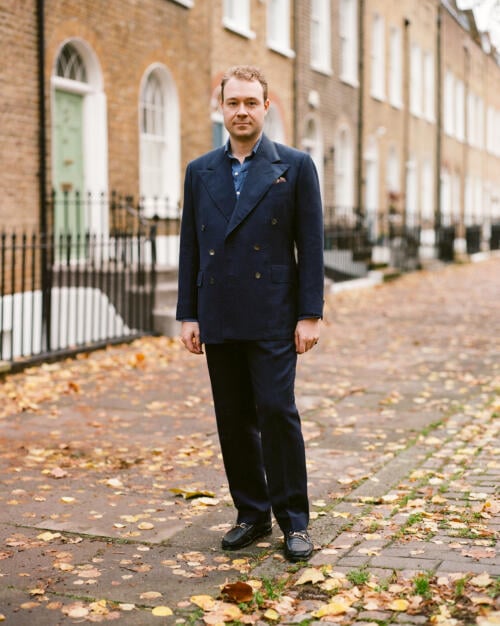
The second look is firmly out of season, but I’ve dressed it how I wear it in summer, with an open-collar linen shirt and soft loafers (horsebits from Horatio).
It’s a double-breasted suit from the ever-reliable team at Whitcomb & Shaftesbury, cut in a breezy wool, silk and linen plainweave from Solbiati. There is only the thinnest layer of canvas in the shoulders, creating minimal weight or bulk, and while it’s made without domette, the coat is canvassed through the lapel, chest and foreparts, for a lovely rich shape.
It’s a design that Suresh and Mahesh call their ‘Air Jacket’, which was first designed to wear in the heat of Chennai, home to Whitcomb’s tailoring workshop.
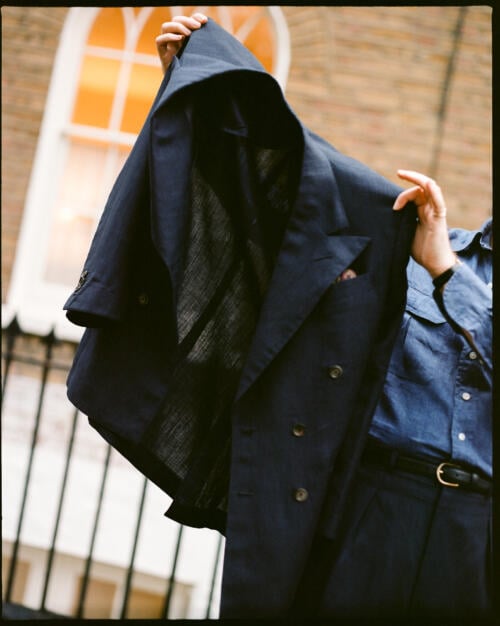
The jacket is almost entirely unlined, and unusually the sleeves are also unlined, bar a thin band of lining around the cuff. The result is a jacket with a dead-straight shoulder line and three-dimensional chest that is absolutely featherweight – impressively so.
It’s not quite as soft as an Italian jacket, but it’s every bit as light. And, in a professional or evening context in particular, I find this suit much more appropriate than something with no shape and slouchy shoulders. It’s neater and cleaner all round.
Incidentally (and I know I’ve made this point before) this suit is a great example of working patiently with a tailor over the long term. My pattern is so good from Whitcomb & Shaftesbury that every time I now slip on a new garment it’s staggeringly clean. We had to do almost nothing to this suit and the team did an excellent job of getting it ready for a warm-weather business trip in record time.

Another of the benefits of a roomier jacket is that its generosity gives you license to enjoy other styling details.
The gauntlet cuffs on this suit (a Whitcomb signature) would look odd on a Florentine jacket, for example – which is all about soft lines and curves, rather than confident shapes and angles – but they suit a jacket with a classical silhouette. The same applies to the lapels, with their breadth and horizontal peaks.
It’s purely personal preference, but I think garments like these are more flattering and more elegant than their unstructured cousins. They capture something of a bygone era but feel modern too. They disguise more sins, flatter more attributes and present an all-round sharper impression to the world.
There will always be a place for unstructured tailoring, and I expect it’ll remain the prevailing choice among stylish men but, for those of you who are feeling adventurous, or seeking something different, don’t write off a structured style. Seek out and experiment with tailors who celebrate the concept of ‘shape and drape’ and you might well be pleasantly surprised.
